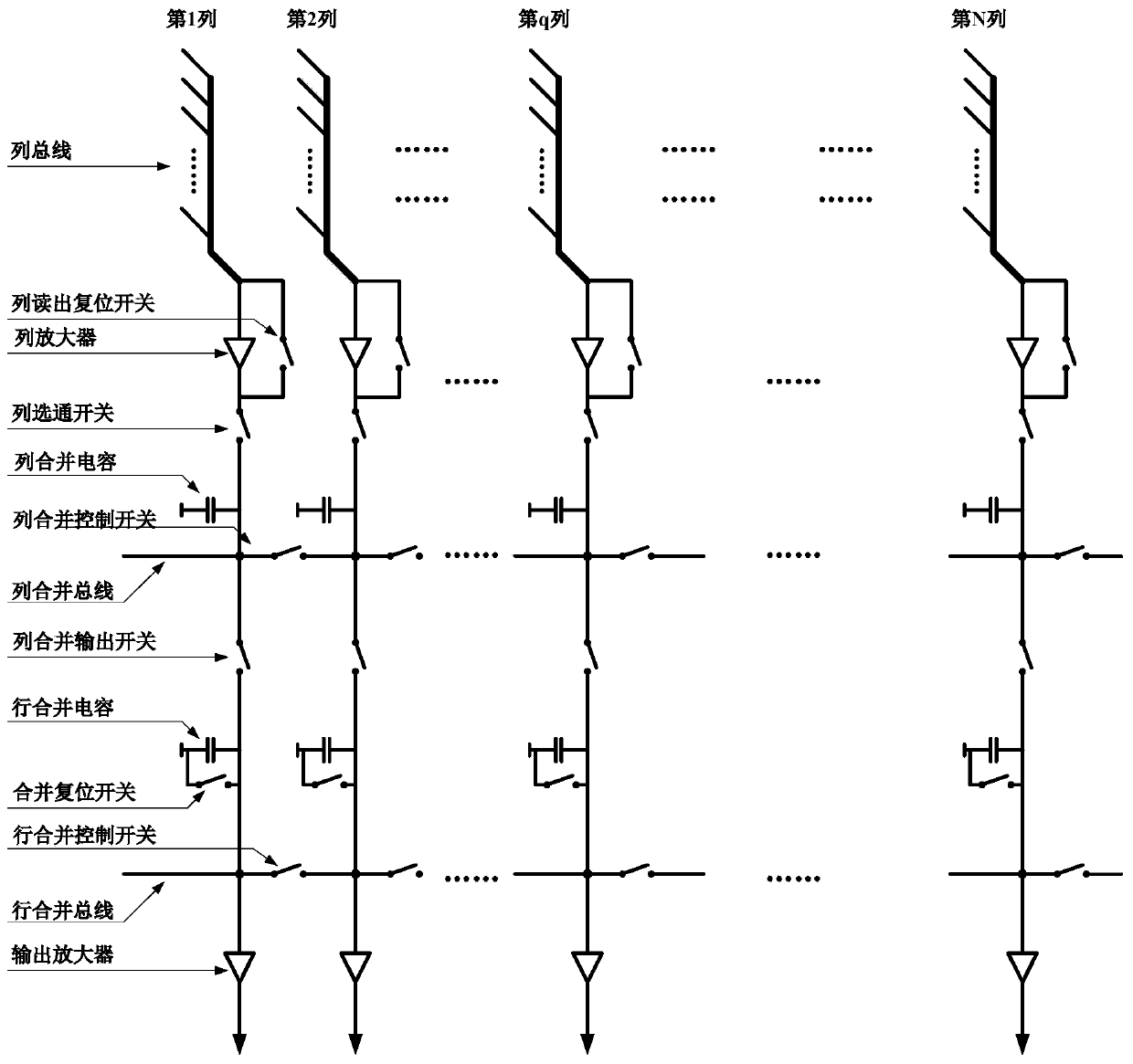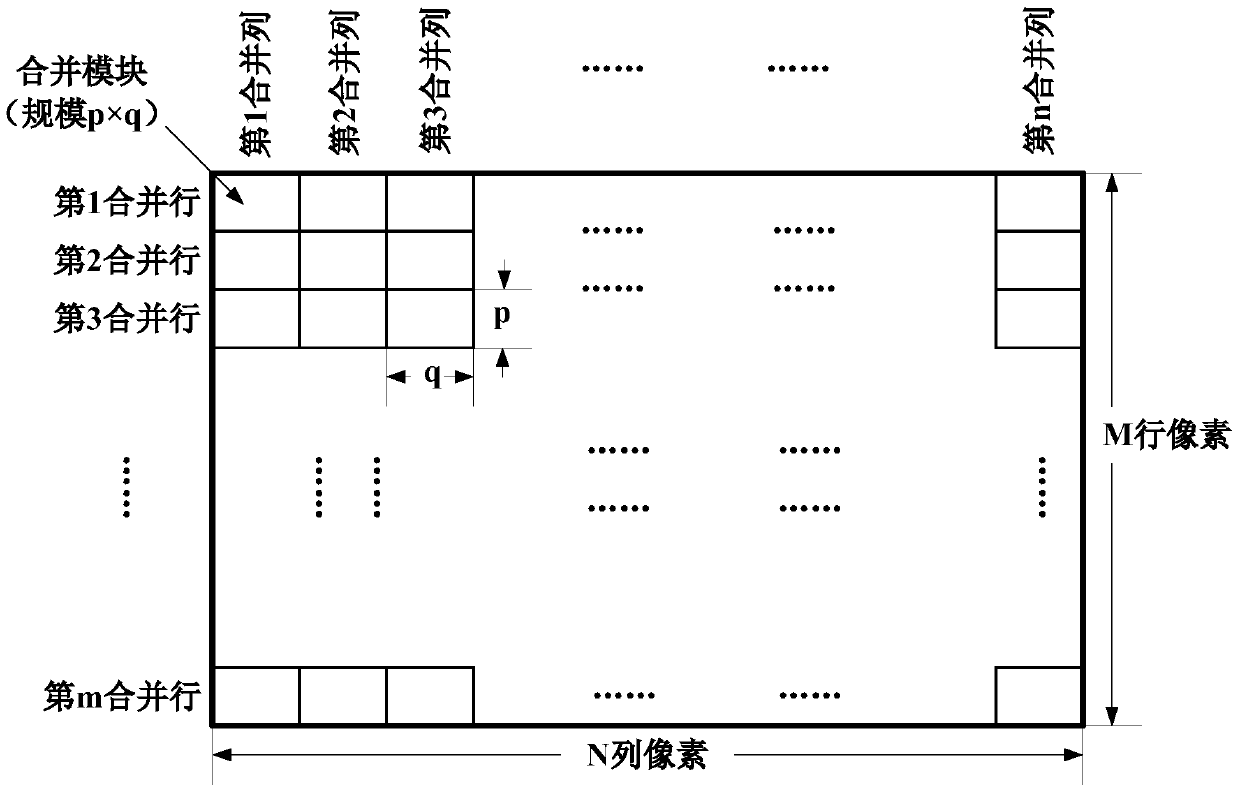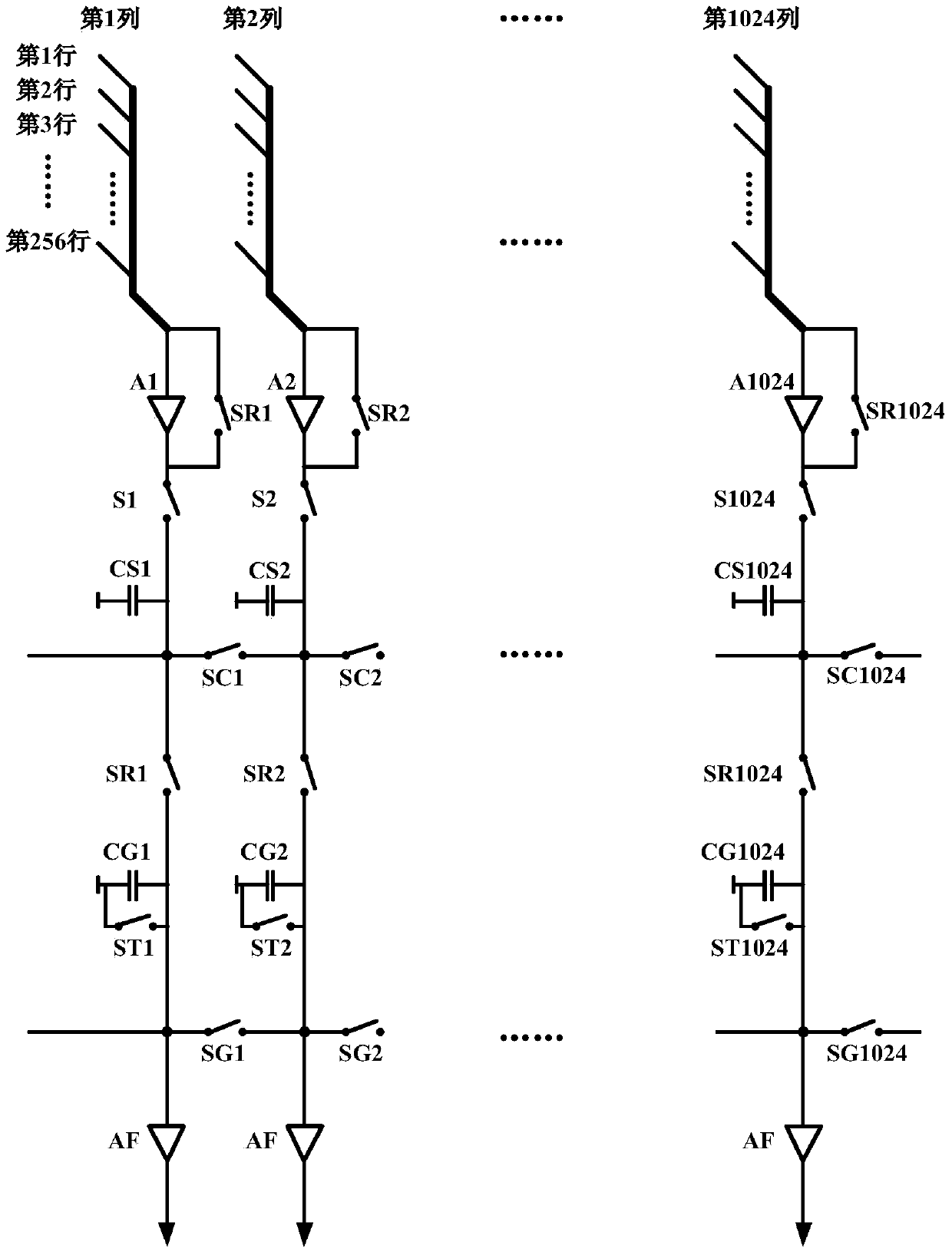Combination readout circuit structure and signal processing readout method of cmos image sensor
An image sensor and readout circuit technology, applied in the field of image sensors, can solve the problems of inability to reduce the speed of the analog output port of the detector, inability to realize pixel merging, limited improvement of the signal-to-noise ratio, etc., so as to avoid the loss of the signal-to-noise ratio and alleviate the Rate pressure, the effect of increasing the working frame rate
- Summary
- Abstract
- Description
- Claims
- Application Information
AI Technical Summary
Problems solved by technology
Method used
Image
Examples
Embodiment Construction
[0026] According to the content of the invention, this embodiment constructs a CMOS detector pixel combination readout structure, the pixel size of the image sensor is 1024×256, 2×2 pixel combination is performed, and the final output size is 512×128.
[0027] as attached image 3 As shown, there are 256 rows of detectors in total, and the readout structure includes 1024 column buses, and each column includes column amplifiers (A1~A1024), column gating switches (S1-S1024), column combining capacitors (CS1~CS1024), and column combining Control switch (SC1~SC1024), column merge output switch (SR1~SR1024), row merge capacitor (CG1-CG1024), reset switch (ST1~ST1024), row merge control switch (SG1~SG1024), output amplifier (SG1~ SG1024).
[0028] When the readout structure is changed, the row of the pixels to be merged is sequentially selected by the column bus, and the row and column pixel merge operation is completed through the column merge control switch (SC1~SC1024) and the r...
PUM
 Login to View More
Login to View More Abstract
Description
Claims
Application Information
 Login to View More
Login to View More - R&D
- Intellectual Property
- Life Sciences
- Materials
- Tech Scout
- Unparalleled Data Quality
- Higher Quality Content
- 60% Fewer Hallucinations
Browse by: Latest US Patents, China's latest patents, Technical Efficacy Thesaurus, Application Domain, Technology Topic, Popular Technical Reports.
© 2025 PatSnap. All rights reserved.Legal|Privacy policy|Modern Slavery Act Transparency Statement|Sitemap|About US| Contact US: help@patsnap.com



